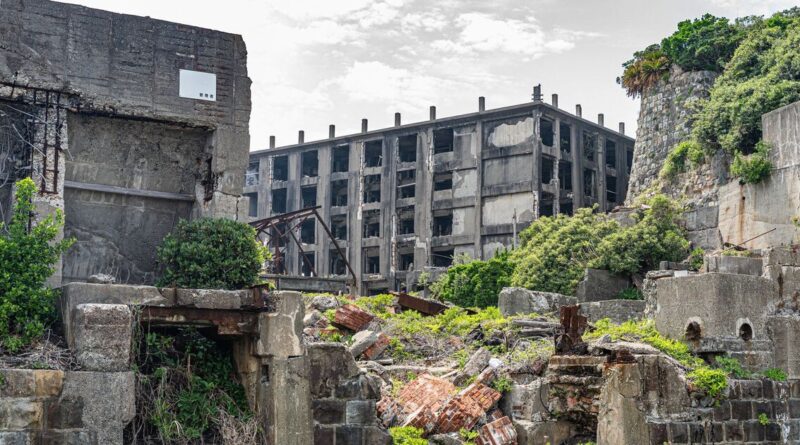The creepy island abandoned by the rich now a haven for dark tourism | World | News
An eerie ghost island just off the coast of a Japanese city known for one of the most devastating events in history has been abandoned for over half a century and is slowly being reclaimed by nature. Hashima Island lies just eight nautical miles from the centre of Nagasaki and is one of an incredible 505 uninhabited islands in the Prefecture of the same name.
Once a symbol of the rapid industrialisation of the Asian country, it also now stands as a reminder of Japanese war crimes as a site of forced labour prior to and during World War 2. At its peak, the 16-acre island was once home to over 5,200 people. It lies just a short distance from Nagasaki, the second city in the world to experience a nuclear attack on August 9, 1945 and saw the death of 10% of its population less than a second after detonation. Interest in Hashima Island has re-emerged in the last 20 years, thanks to its undisturbed historic ruins, and it has gradually become a tourist attraction, with travel reopened to its shores in April 2009.
Known as Gunkanjima or “Battleship Island” due to its shape, the island was once a thriving coal mining hub in the 1800s after rich coal reserves were discovered. Mitsubishi purchased the island and its mines in 1890 during a period of rapid industrialisation, providing housing for workers and their families. The company transformed the island, constructing apartment blocks, a school, communal baths, a pool, gardens, a clubhouse and even a pachinko parlour – a popular Japanese pinball game.
Residents of the island earned significantly higher salaries than their mainland counterparts and many homes were equipped with cutting-edge technology, including the latest satellite TV. By 1959, it was one of the most densely populated areas in the world as the lure of higher pay led to people flocking to its shores.
By the late 20th century, the coal reserves were exhausted and mining became unfeasible. Residents soon began to relocate and eventually the island was deserted. Mitsubishi closed its coal plants in 1974.
Hashima Island also holds a dark place in history. During World War 2, Chinese prisoners of war and exploited Korean immigrants were transported to Hashima and forced to work in the mines under brutal and inhumane conditions. Thanks to the island’s seawall, it was impossible to escape and many died from starvation and exhaustion.
Hashima Island remains plagued by controversy. In July 2015, the island’s coal mine was formally approved as a UNESCO World Heritage Site as part of the Sites of Japan’s Meiji Industrial Revolution series. Japan and South Korea negotiated a deal to facilitate this, in which Korea would not object to allowing Hashima Island to be included, while Japan vowed not to cover up the history of forced labour on the island.
However, all other UNESCO committee members agreed that Japan did not fulfil its obligations and efforts to mediate this are ongoing.
Hashima’s dystopian atmosphere has caught the attention of filmmakers, including Sam Mendes, who used it as a location for his 2012 James Bond hit, Skyfall, when 007 confronted his chief antagonist.
Modern tourists have attested to this creepy atmosphere. A recent visitor wrote on Tripadvisor: “An unforgettable experience […] Walking the designated paths, you can almost feel the presence of the thousands who lived and worked here. A truly haunting piece of Japan’s industrial past”.





